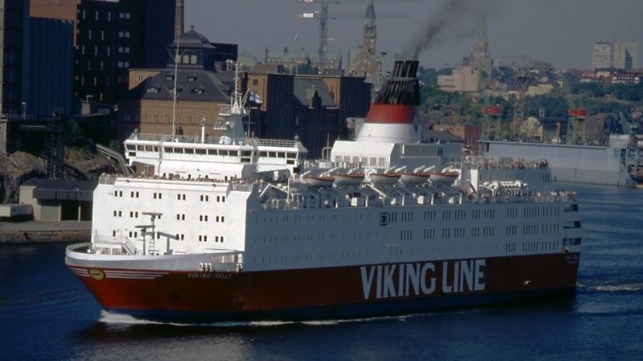Investigation Reaffirms "Bow Visor" Theory for Sinking of the Estonia
852 lives were lost when the Estonia sank in 1994. The cause has been a matter of debate for decades

30 years after the ferry Estonia went down in the Baltic, the deadly sinking is still the most controversial maritime disaster in Europe. The vessel's loss in heavy weather off Finland was initially blamed on the loss of the ship's bow shield, the hinged visor that gave access to her wide ro/ro decks. But the accident was also shrouded in official secrecy: authorities forbade any dive visits to the wreck site and even made plans to cover it in concrete.
Victims' families and independent researchers have long maintained that something else - something less innocent - might have been to blame, like an explosion or a collision with a submarine. Unauthorized ROV explorations in 2020 revealed that the wreck had large openings in its hull, perhaps indicative of damage sustained before the sinking.
This week, a new joint Estonian, Finnish and Swedish investigation pushed back on these controversial claims and endorsed the original conclusion - bow visor failure. In a preliminary report, the team determined that the vessel was "not seaworthy" before she ever departed the pier.
Using source material from previous investigations, extensive site surveys, and new interviews with survivors, the team homed in on the construction of the bow visor and the damage it sustained.
At the time the ship was designed, its class society had no load calculation rules or inspection requirements for bow visors. Lacking guidance, the naval architect used the load calculations for standard non-opening bows. The design called for mild steel construction throughout, even for the attachment mechanisms, which were subject to high loads.
In addition, the yard deviated from the plans: two flat bars shown in the design for the bottom of the visor were not installed; some welds were missing or defective; some details had been "changed using a cutting torch"; and part of the hinge arrangement "differed considerably from the manufacturing drawing."
After the sinking, divers found the bow visor on the bottom, detached from the ship and badly damaged. The visible damage to the visor was consistent with failure from heavy loading to its attachment points, the team concluded. Two of the hinges were broken off and three locking lugs were torn loose, and the welds showed "poor fusion and lack of penetration."
Similar issues were found aboard Estonia's sister ship, the Diana II, and other Baltic bow-loading ferries. The problem was known before Estonia was ever built: a 1974 safety report concluded that “nearly all locking devices of bow doors on existing vessels are too weak."
The design of the interface between the visor and loading ramp also contributed to the sinking. The ramp was so long that it extended above the deck level of the visor, breaching safety rules for the design of the collision bulkhead. The top of the ramp was enclosed in a compartment built into the visor's forecastle deck. When the visor broke loose, the compartment came to rest on the top of the ramp, ripping it down and letting water flood the car deck.
This design element should have required a special exemption from safety rules, but Estonia never received one - and she was therefore unseaworthy, the inspectors concluded.
The report also refutes claims about any collision damage. Previous unauthorized ROV dives revealed large holes in the hull, which had never been identified or discussed in the original official investigation. The new joint investigation team determined that the structural damage corresponded to the terrain at the Estonia's final resting site, and the holes were created when she hit the bottom.
The preliminary report does not fully address the extreme deformation of the bottom of the visor. The paint was entirely missing from the section's bottom, and the wrecked plating had three-dimensional patterns of tearing, folding and twisting - impossible to create through impact, but typical of explosion damage, according to metallurgists consulted by news outlet Fokus Estonia.
The official joint report released this week found that parts of the visor's steel were exposed to high heat during construction or maintenance, and it included metallurgical analysis of select samples from the wreck. The investigative team concluded that there was no evidence of an explosion.
Top image: Viking Sally (Mark Markefelt / CC BY SA 4.0)
